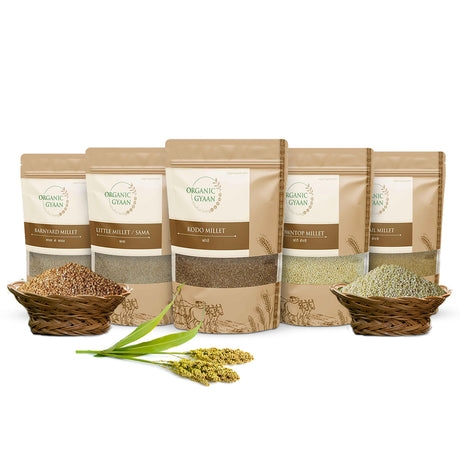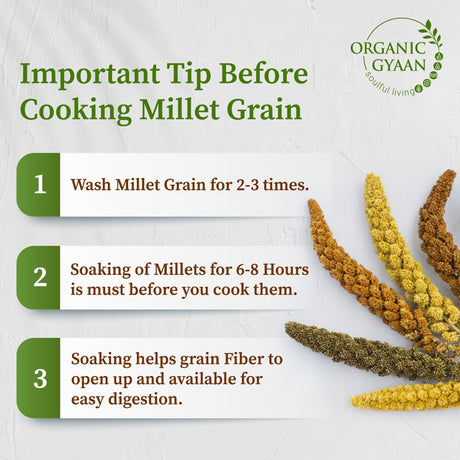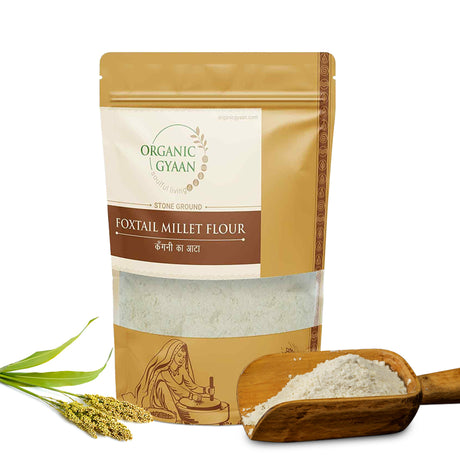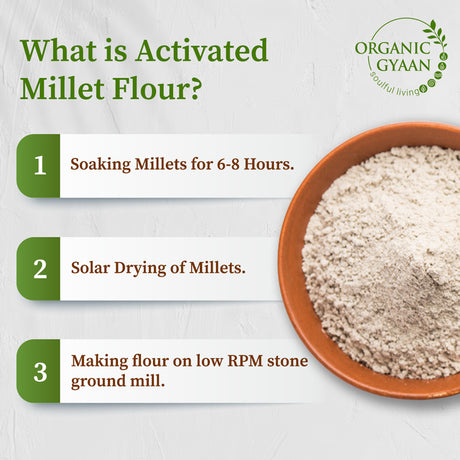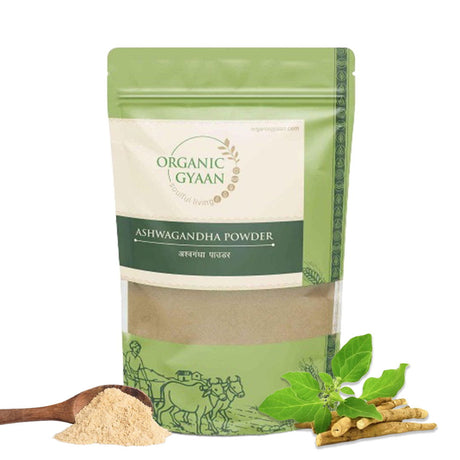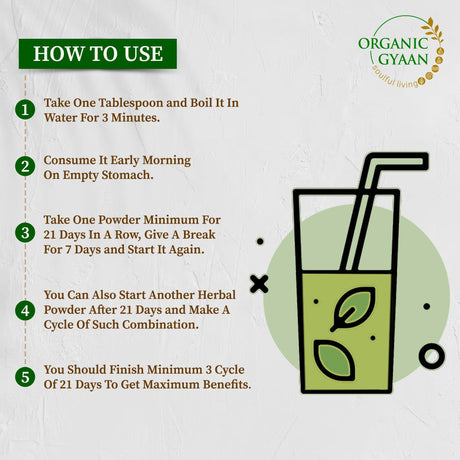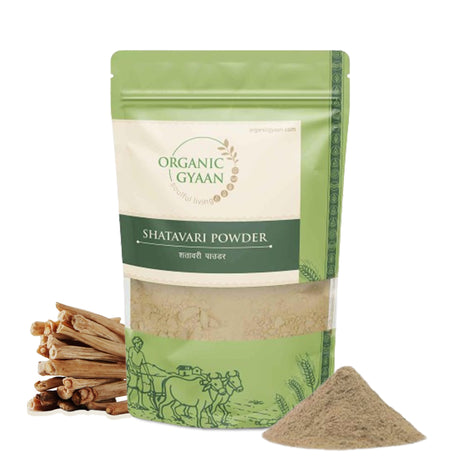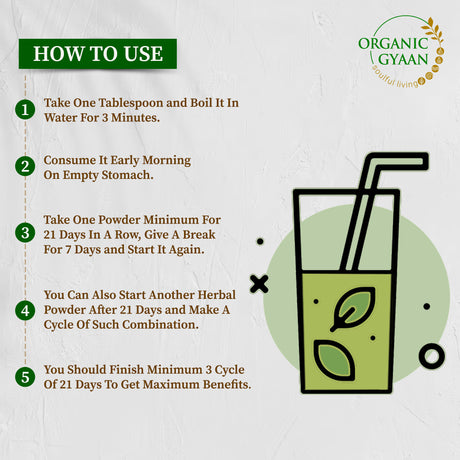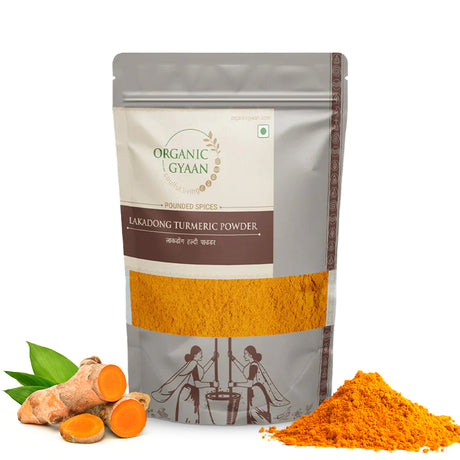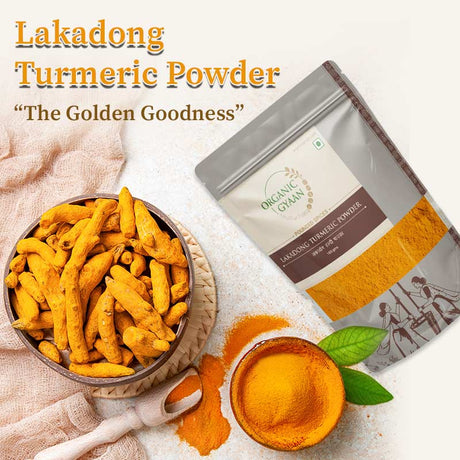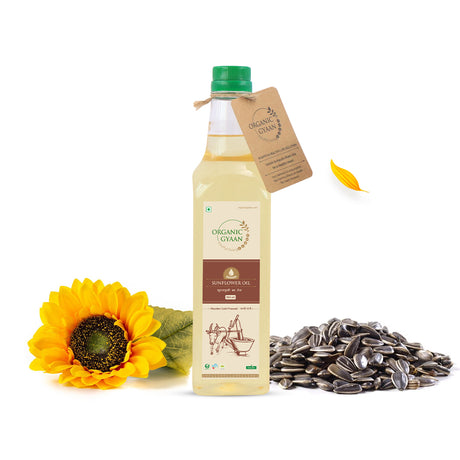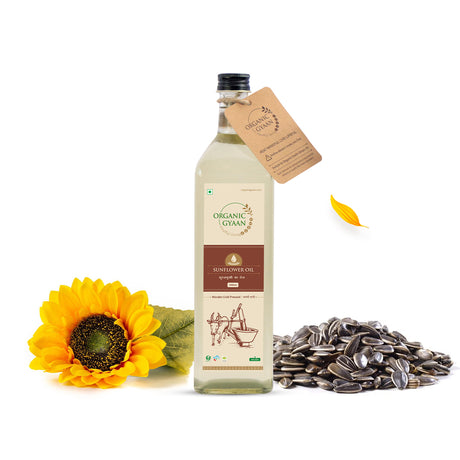Did you know that more than 70% of Indians are vitamin D deficient, despite living in a country blessed with abundant sunshine?
Vitamin D is often called the "sunshine vitamin," but our modern indoor lifestyle, pollution, and lack of dietary awareness have led to widespread deficiencies. That’s where the right vitamin D foods can make a real difference.
In this blog, you'll discover the top 10 vitamin D foods that are purely vegetarian, sattvic, and aligned with traditional Indian values. These foods not only help support your vitamin D levels naturally but also promote overall health, energy, and immunity.
Why Is Vitamin D Important?
Vitamin D is a fat-soluble vitamin that plays a key role in:
- Calcium absorption for strong bones and teeth
- Immune system function
- Supporting mental health and mood balance
- Muscle strength and energy metabolism
-
Reducing inflammation and fatigue
Unfortunately, very few natural foods contain vitamin D, especially in a vegetarian diet. That’s why making intentional choices about what you eat is crucial.
Top 10 Vitamin D Foods
Here are the best foods and herbs that support vitamin D levels and absorption in the body:
1. A2 Gir Cow Ghee
A2 ghee is made from the milk of indigenous Indian cows (like Gir), using the traditional bilona method. Unlike regular ghee, A2 ghee contains only the A2 beta-casein protein, which is easier to digest and more compatible with the human body.
Why it's beneficial:
- Vitamin D Absorption: Ghee is a natural fat, and vitamin D is a fat-soluble vitamin. This means vitamin D cannot be properly absorbed unless consumed with healthy fats.
- Ayurvedic Value: Ghee is considered ojas-enhancing, sattvic, and rejuvenating. It nourishes all dhatus (tissues), lubricates joints, and enhances digestion (agni).
-
Additional Nutrients: Rich in vitamin A, E, and butyrate-great for gut and liver health.
How to use it:
- Add 1 tsp to your warm meals-dal, khichdi, rotis, or cooked vegetables.
-
You can also use it in baking or drizzle over millet dishes.
Without proper fat in the diet, even sun-derived vitamin D cannot be transported or stored effectively.
2. Cold-Pressed Sesame Oil
Sesame oil, extracted using traditional cold-press methods (kachchi ghani), retains its nutrients and natural flavor. It is warming, grounding, and rich in polyunsaturated fats.
Why it's beneficial:
- Enhances Vitamin D Function: Sesame oil doesn’t contain vitamin D directly, but its healthy fat profile supports the metabolism, transport, and absorption of fat-soluble vitamins like D.
- Ayurvedic Benefits: Known as “Taila Raj” (king of oils), sesame oil balances Vata and Kapha doshas, improves circulation, and strengthens bones and teeth.
-
Supports Liver Health: A healthy liver is essential for converting vitamin D into its active form in the body.
How to use it:
- Cook your sabzis, parathas, or tarka in sesame oil.
-
Use it for Abhyanga (Ayurvedic self-massage) to enhance circulation and detoxification.
3. Cold-Pressed Groundnut Oil
Extracted from high-quality peanuts using traditional cold-pressing, groundnut oil is rich in monounsaturated fats and maintains its nutrients due to the chemical-free process.
Why it's beneficial:
- Fat Solubility Support: Like sesame oil, groundnut oil helps absorb and utilize vitamin D effectively.
- Nutritional Value: Contains resveratrol, healthy fats, and antioxidants that protect bones and the cardiovascular system.
-
Digestive Support: Groundnut oil is light and doesn’t disturb doshic balance when consumed in moderation.
How to use it:
- Ideal for cooking, shallow frying, and preparing traditional snacks.
-
Can be used in combination with ghee for tempering.
4. Fortified Millet-Based Cereals & Flours
These include flours and breakfast options made from millets like ragi (finger millet), foxtail millet, little millet, etc. Some versions are fortified with vitamin D.
Why they're beneficial:
- Many millet-based foods are now enriched with vitamin D2 or D3, especially in ready-to-eat or ready-to-cook formats.
- Naturally high in calcium, magnesium, and phosphorus, which work in synergy with vitamin D.
-
Millets are ancient grains that are easy to digest, gluten-free, and dosha-balancing.
How to use them:
- Make ragi porridge or dosa
- Use multigrain flour to prepare rotis or cheelas
-
Choose millet-based breakfast mixes labeled as fortified with vitamin D
5. Chia Seeds
Chia seeds come from the Salvia hispanica plant and are widely regarded as a superfood due to their nutrient density.
Why they're beneficial:
- Support Nutrient Absorption: They help in better absorption of fat-soluble vitamins, especially vitamin D, due to their high omega-3 fatty acid and fat content.
- Rich in Bone Nutrients: High in calcium, phosphorus, magnesium, which enhance the action of vitamin D.
-
Detox and Digestive Benefits: Chia seeds are hydrophilic-they absorb water and help with hydration, digestion, and satiety.
How to use them:
- Soak 1 tablespoon in water overnight and add to smoothies, lemon water, or fruit bowls.
-
Make chia seed pudding with jaggery and nuts.
6. Flax Seeds
Flax seeds (also known as linseeds) are nutrient-dense seeds rich in alpha-linolenic acid (ALA), a plant-based omega-3 fatty acid.
Why they're beneficial:
- Vitamin D Support: Though flax seeds don’t contain vitamin D, the omega-3s help regulate hormonal and inflammatory responses that influence vitamin D metabolism.
- Digestive Health: Rich in soluble and insoluble fiber which helps in nutrient assimilation.
-
Bone & Heart Health: Magnesium-rich, and support tissues that vitamin D also strengthens.
How to use them:
- Roast and grind, then add to rotis or batters
- Mix into ladoos with jaggery and A2 ghee
-
Sprinkle on salads or porridge
7. Dry Fruits – Almonds & Walnuts
Almonds and walnuts are whole, natural, nutrient-rich nuts that are high in healthy fats, minerals, and antioxidants.
Why they're beneficial:
- Vitamin D Storage & Transport: The fat content helps the body store and circulate vitamin D efficiently.
- High in Magnesium: A mineral that activates vitamin D in the body.
-
Ayurvedic Value: Soaked almonds are sattvic, promote brain health, and balance Vata. Walnuts are especially good for nervous tissue and memory.
How to use them:
- Soak 4–5 almonds and 1–2 walnuts overnight; eat in the morning
- Use in laddus or energy bars
-
Add to millet-based desserts or porridges
8. Triphala Powder
Triphala is a classic Ayurvedic blend of three fruits: Amalaki (Amla), Haritaki, and Bibhitaki. It is a powerful digestive and detoxifying agent.
Why it's beneficial:
- Supports Gut Health: Good gut health is essential for nutrient absorption, including vitamin D.
- Enhances Liver Detoxification: The liver converts vitamin D into its usable form. Triphala aids this process.
-
Balances Doshas: Supports all body types (Vata, Pitta, and Kapha).
How to use it:
- Take 1 tsp with warm water before bedtime.
-
Can be consumed daily for long-term digestive health.
9. Ashwagandha Powder
Ashwagandha is a potent adaptogen used in Ayurveda to balance the body’s stress response and support hormonal function.
Why it's beneficial:
- Supports Vitamin D Receptor Sensitivity: Cortisol imbalance can reduce the body’s ability to use vitamin D effectively. Ashwagandha helps regulate this.
- Boosts Immunity: Works in sync with vitamin D’s immune-modulating effects.
-
Nourishes Bones & Muscles: Supports the nervous system and stamina.
How to use it:
- Mix ½ to 1 tsp in warm water or herbal tea in the morning.
-
Combine with dates or dry fruit laddoos.
10. Natural Sunlight Exposure
Even the best diet can’t replace the sun’s ability to help the body synthesize vitamin D naturally. Sun exposure converts 7-dehydrocholesterol in the skin to vitamin D3.
Best practices for absorption:
- Expose arms, legs, and face to sunlight for 15–20 minutes daily, especially between 6:30–8:30 AM.
- Avoid sunscreen during this period for optimal synthesis.
-
Practice Surya Namaskar or morning walking for added benefit.
Ayurvedic Insight:
Sunlight is associated with Surya energy (fire and transformation). It regulates sleep, metabolism, and emotional balance-all linked to vitamin D health.
Natural Tips to Get More Vitamin D
- Eat healthy fats (like ghee or cold-pressed oils) with your meals
- Use herbs like Triphala and Ashwagandha to support digestion and hormones
- Soak seeds and nuts before eating-they’re easier to digest
- Go out in the sun every day-even 15 minutes is enough
- Avoid eating too much junk or packaged food-they block nutrient absorption
Conclusion
Vitamin D is vital for strong bones, good immunity, and steady energy. While sunlight is the best source, today’s lifestyle often keeps us indoors. The solution lies in simple, sattvic, and natural foods that help your body absorb and use vitamin D effectively.
By adding A2 ghee, cold-pressed oils, millets, seeds, dry fruits, and Ayurvedic herbs like Triphala and Ashwagandha, you can naturally support your vitamin D levels and overall health-without depending on supplements.
Start small-add a spoon of ghee to your meals, use cold-pressed oils for cooking, snack on soaked nuts, and spend 15 minutes in the morning sun. These tiny habits create big results for your energy and wellbeing.

